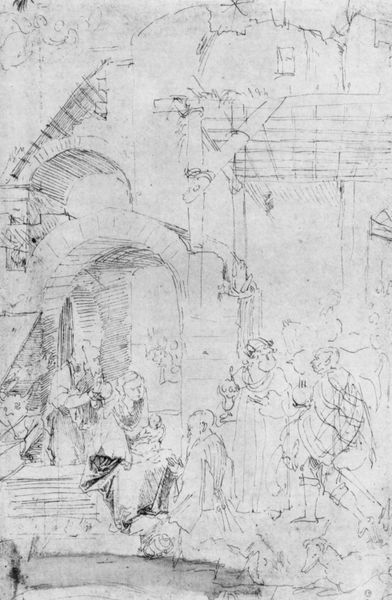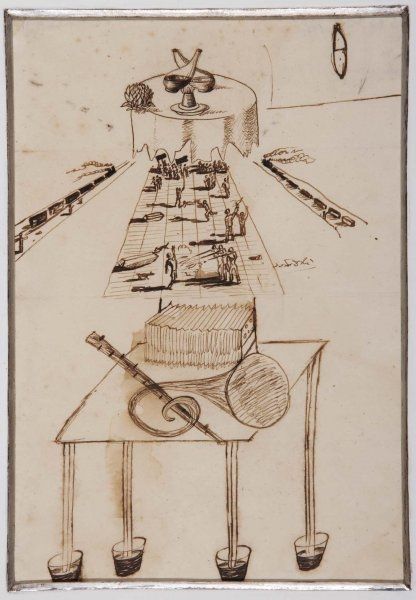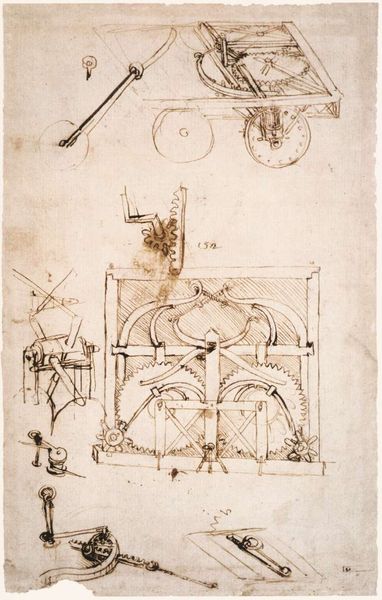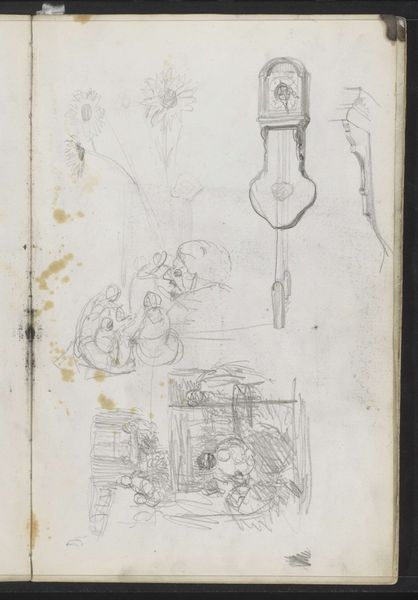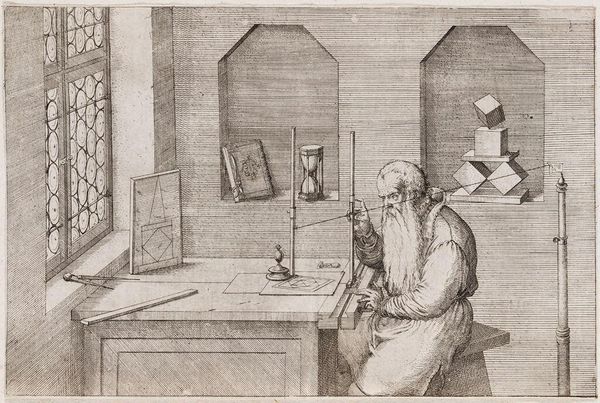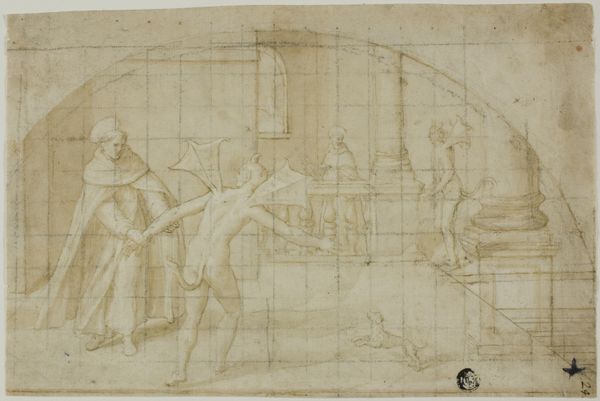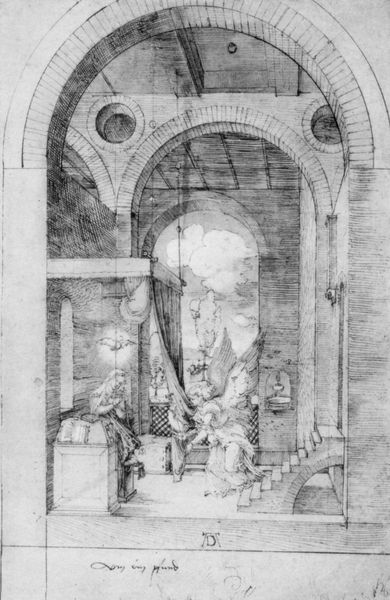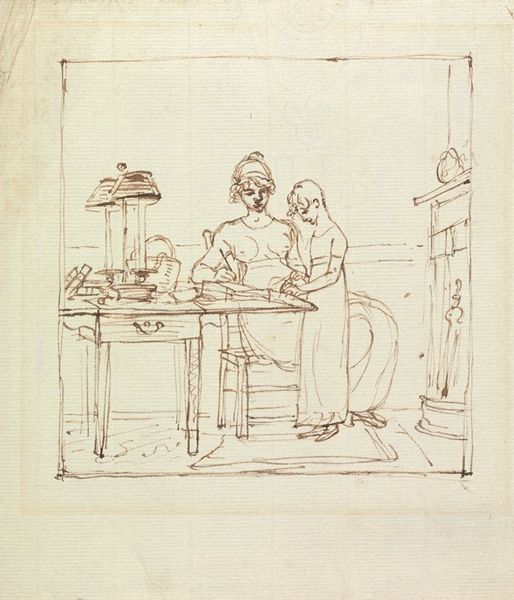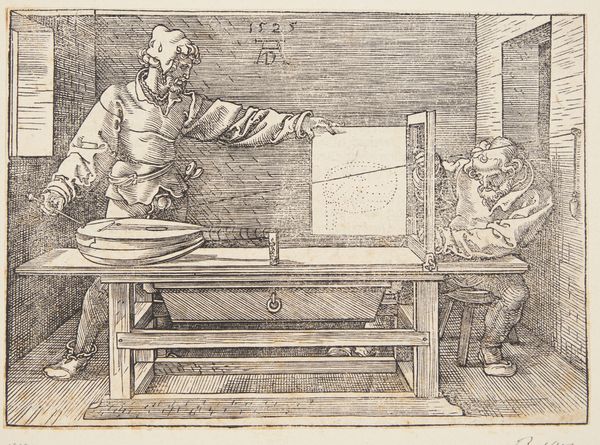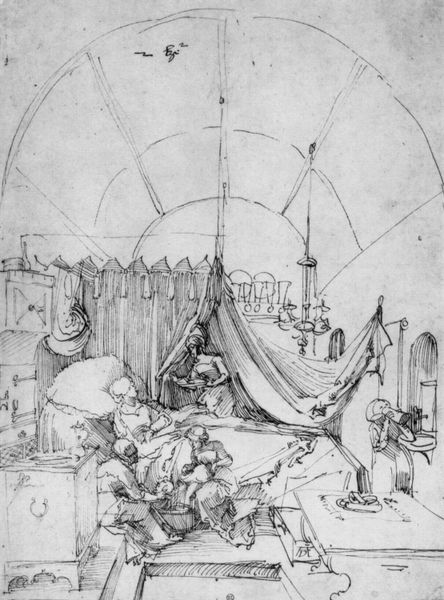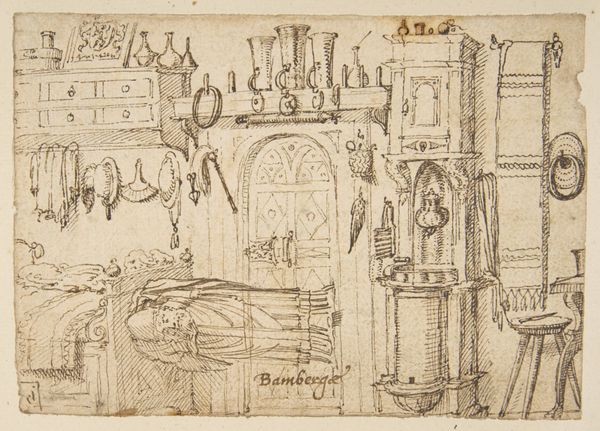
drawing, print, ink, woodcut, pen
#
drawing
#
narrative-art
# print
#
caricature
#
text
#
ink
#
sketch
#
pen-ink sketch
#
woodcut
#
pen
#
genre-painting
#
northern-renaissance
Copyright: Public domain
Curator: Here we have what’s known as "Caricature of Lazarus Spengler," attributed to Albrecht Dürer. It's a pen and ink sketch, a prime example of the Northern Renaissance style, offering a peek into the daily life of its time. Editor: First impression? A flurry of motion frozen on paper! It’s like looking at a blueprint for organised chaos, but there’s a strange beauty in all the bustling activity. Curator: Indeed. Though referred to as a caricature, it more realistically documents three stages of printing: setting the type, using the printing press, and stoking the oven, within what is presumably a print shop. The "caricature" aspect might be the artist's intent to capture the hurried, somewhat frantic nature of labor. Editor: Frantic is right! Everyone's leaning, pushing, and pulling. It’s almost funny how seriously they're taking the whole thing. You almost want to tell them, "Relax, guys, it's just ink on paper!" But then you remember, it's MORE than just that; it's how knowledge spreads! Curator: Exactly. The advent of the printing press drastically changed society. This image perhaps inadvertently captures that urgency and transformative power. Note how meticulously Dürer captures even the smallest detail – the tools hanging on the walls, the textures of the clothing. Editor: Yeah, the details are phenomenal. You could get lost just following the lines of the ink. And the body language! The way each figure throws their weight into the job really conveys a sense of honest toil. Curator: What's fascinating to me is how this image serves as both a depiction of labour and a silent commentary on the emerging print culture. We, as viewers, benefit directly from that shift in the ability to document, archive and record. It reflects back how we understand that society now, in ours. Editor: It also reminds me that creating anything meaningful involves sweat, grit, and a little bit of manic energy. Whether it’s words, images, or something else entirely, it’s good to see that human struggle is something even the Old Masters knew something about! Curator: Agreed. It's a wonderful bridge between historical observation and an appreciation of the hard work required to create the printed matter that became so vital in shaping modern life. Editor: Absolutely. Dürer’s little slice-of-life manages to encapsulate huge social changes and basic human endeavour, which is probably why it's so affecting.
Comments
No comments
Be the first to comment and join the conversation on the ultimate creative platform.
